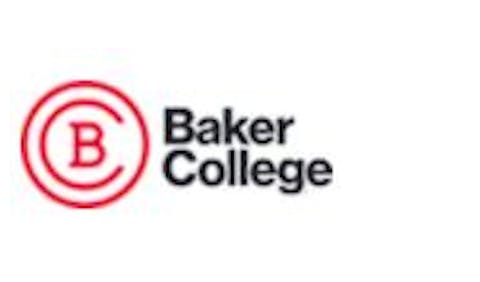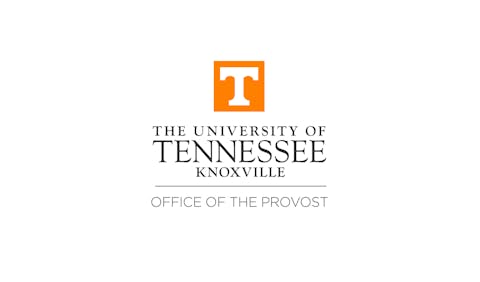 Dr. Erik M. Hines
Dr. Erik M. Hines
Jesus refers to the individuals who think they were doing the right thing, such as helping people and feeding the poor, rather than doing performative things, such as discussing what one would do to help people or implementing policies that are counterintuitive to assisting people. For example, Black students in P-12 schools tend to be suspended at higher rates than their racial peers and the belief is that this discipline will teach Black students a lesson to behave in class. Often missing is educators having compassion and understanding the root cause of students’ actions that shifted to them being disciplined to implementing restorative justice measures.
Moreover, given the current socio-political era of anti-DEI, faculty and other university personnel have been losing funding, positions, and operational units that support research and programming that help the most vulnerable student populations to thrive and attain optimal outcomes in higher education and in their personal lives. As Black Eyed Peas eloquently stated in their Grammy nominated and multi-platinum song, “Where is the love?”
On one hand, as a society, we claim to care about each other. On the other hand, some citizens believe that helping those who differ from them is a zero-sum game, and that it results in receiving resources based on arbitrary characteristics rather than merit. With the aforementioned in mind, we discuss compassionate pedagogy to understand the needs of students in P-16, especially given the current climate and rhetoric around education.
As stated earlier, in the current political and social climate, dominant ideologies and political agendas to dismantle the educational prowess of Blacks are being prioritized. Educators should employ methods such as compassionate pedagogy to combat such disillusioned propaganda and empower Black students, while promoting healing and reintegrating caring and love.
Understanding Compassionate Pedagogy  Dr. Donna Y. Ford
Dr. Donna Y. Ford
This concept stems from Richie Neil Hao’s (2011) research on critical compassionate pedagogy, which draws on Freire’s conceptualization of critical pedagogy (e.g., Pedagogy of the Oppressed). Hao defined critical compassionate pedagogy as “a pedagogical commitment that allows educators to criticize institutional and classroom practices that ideologically place underserved students at disadvantaged positions, while at the same time be self-reflexive of their actions through compassion as a daily commitment” (p. 92). In this practice, educators are committed to the success of historically marginalized student subgroups by countering oppressive pedagogies. This happens by first acknowledging structural issues and then reducing negative impacts on students (Hill et al., n.d.). The goal is for educators and students to collaborate in creating a classroom environment that is conducive to learning for all. - Baylor University
Compassionate pedagogy serves to heal the wounds that have been inflicted on Black students while they navigate through white hegemonic, oppressive educational systems. These wounds will not heal from having culturally incompetent educators, such as those mentioned above, who view punitive practices like suspension and expulsion as helpful and legitimate. Black students are not valued or respected in systems designed for whites and by whites and are frequently traumatized. As Ford extensively writes about, they have limited opportunities to propel them forward, such as gifted and talented education and advanced courses.
Compassionate pedagogy counters this narrative by encouraging educators to acknowledge and validate students’ experiences, and provide safe spaces to listen to and build trust with Black students, while working to identify methods to enhance and support optimal development. Many current practices within the classroom are discriminatory and culturally biased and, therefore, structured and oriented around the ideals of the dominant race to maintain the status quo. To implement a sense of compassion, educators must be committed to a flexible process facilitated through positive communication and transparency. In this way, educators are dedicated to addressing enduring problems through compassion and creativity. While not an exhaustive list, examples of such practices can include:(a) flexibility with assignment due dates; (b) the opportunity to make up exams; and (c) dropping the lowest grade(s). Other compassionate pedagogy strategies offer variability with assignments, and allow students to select their preferred modality in order to demonstrate proficiency with topics.
Despite educators' efforts to offer ‘open door policies’ or office hours, Black students may be anxious or embarrassed about reaching out. This requires educators to extend their willingness to assist through frequent reminders and expressing enthusiasm to have discourse. The lack of compassion exhibited by teachers in classrooms is no different than the attempted erasure of Blacks and people of color in society by those in government. What must also be considered are the messages to and ramifications on Black students who are forced to endure such harmful environments. We now turn to the need and implications for compassionate pedagogy for three helpful professions, recognizing that they, too, play a significant role in setting the tone in schools and sessions. Below, we discuss implications for compassionate pedagogy in the areas of school counseling, clinical mental health counseling, and educational psychology
Implications for School Counseling
Given the skillsets school counselors are trained to use with students, compassionate pedagogy can easily be implemented into the resources used to not only help students, but to also consult with teachers and administrators to reinforce such practices in their classrooms and offices. Specifically, school counselors are trained to identify barriers to optimal educational success by reviewing data to develop a plan to address opportunity gaps. Moreover, school counselors are positioned to facilitate individual and group counseling to assist with study skills, stress, anxiety, and social-emotional learning development. Thus, students will have the tools needed to thrive academically.
- We must never forget that empathy is a way of being compassionate and understanding students’ feelings.
- Listen to learn, understand, and validate students’ experiences.
- Note that advocacy on behalf of students is a form of compassionate pedagogy.
- School counselors are trained in cultural competency; therefore, understanding students’ background and context can improve relationships, as well as cultivate students’ interests in learning.
- School counselors can aid in creating a culture where schools can be a safe haven for students - where unconditional positive regard and being non-judgmental are the norm and not the exception.
Implications for Clinical Mental Health Counseling
Clinical Mental Health counselors work with individuals and families to address mental health needs. With increased awareness of the impact that academic bias and discrimination have on psychological wellness and overall development, they are well-positioned to implement a spirit of compassion and help cultivate healthy, encouraging environments. Additionally, they offer spaces for collaboration with communities, school personnel, families, and students to ensure students are equipped with skills and strategies to succeed despite such unwelcoming circumstances that are commonplace for Black students.
- CMH counselors can educate teachers and administrators about warning signs and mental health symptoms that are exacerbated due to biased treatment and discrimination and promote compassion through culturally relevant strategies.
- CMH counselors can validate student concerns by holding space, such as offering healing circles, to alleviate stress from past harm, and to guard against future offenses.
- CMH counselors can advocate for student wellness by educating key stakeholders about the need for empathy and compassion.
- CMH counselors can foster relationships with culturally competent community providers to enhance the student’s support network through referral and continued engagement.
- CMH counselors must increase awareness of their biases and work to identify systemic barriers that impede student success.
Implications for Educational Psychology
Educational psychologists must be committed to the goal of improving students’ academic, social, and psychological well-being, and recognize how the objectives of compassionate pedagogy can be useful in supporting students and teachers.
- It is also important to work with families to improve their child’s learning at home and school. Provide strategies and resources so that compassionate pedagogy extends to home environments. Families can also benefit from knowing about this pedagogy, making them a stronger and more informed advocate. Knowledge is power.
- It is essential to provide teachers with professional development workshops, strategies, and resources to become culturally competent in their dispositions, knowledge, and skills. This subsequently prepares P-12 classroom teachers to promote compassionate pedagogy in all that they do.
- Educational psychologists improve minoritized students’ success by designing prevention and intervention strategies/programs grounded in the culture of students. This includes tailoring compassionate pedagogy strategies via a cultural lens for each student, and culturally similar groups of students.
- Teach students how to be self-advocates - asking for help and speaking up about concerns. Compassionate pedagogy cannot operate in silence.
A Final Word
For helping professionals, working effectively with disenfranchised students requires compassion. There is absolutely no room for a lack of compassion in teaching, educational psychology, counseling, and mental health services. We cannot comprehend how such professionals can think otherwise. As the saying goes: ‘students don’t care what you know until they know that you care.’ CARE (compassion, advocacy, respect, equity) and compassion go hand-in-hand. This marriage is needed now more than ever before.
Dr. Erik M. Hines is Professor of Counseling in the College of Education and Human Development at George Mason University.
Dr. Donna Y. Ford is Distinguished Professor of Education and Human Ecology at The Ohio State University.
Dr. Tanya J. Middleton is a clinical assistant professor in the Department of Educational Studies at The Ohio State University.















